
Discover what the current average tree removal cost is based on different factors to know how much it will cost to take care of a dead or troublesome tree on your property.
Enjoy fresh-picked fruit and save yourself a trip to the store


Why drive to the grocery store when you can grab a few fresh, homegrown fruits right from your backyard? Though it requires a bit of patience, having an edible garden at home is great for those looking to live more sustainably (and boost their curb appeal).
Contrary to popular belief, many fruit trees are fairly easy to grow, even in small spaces. The key is to make sure they’re in ideal growing conditions—in their optimal hardiness zone with enough sunlight, water, and soil nutrients. Whether you start from a tiny seedling or a partially-grown version from a plant nursery, rest assured that the fruit it bears will be worth the wait. Here are some of the best fruit-bearing trees and how to care for them at home.
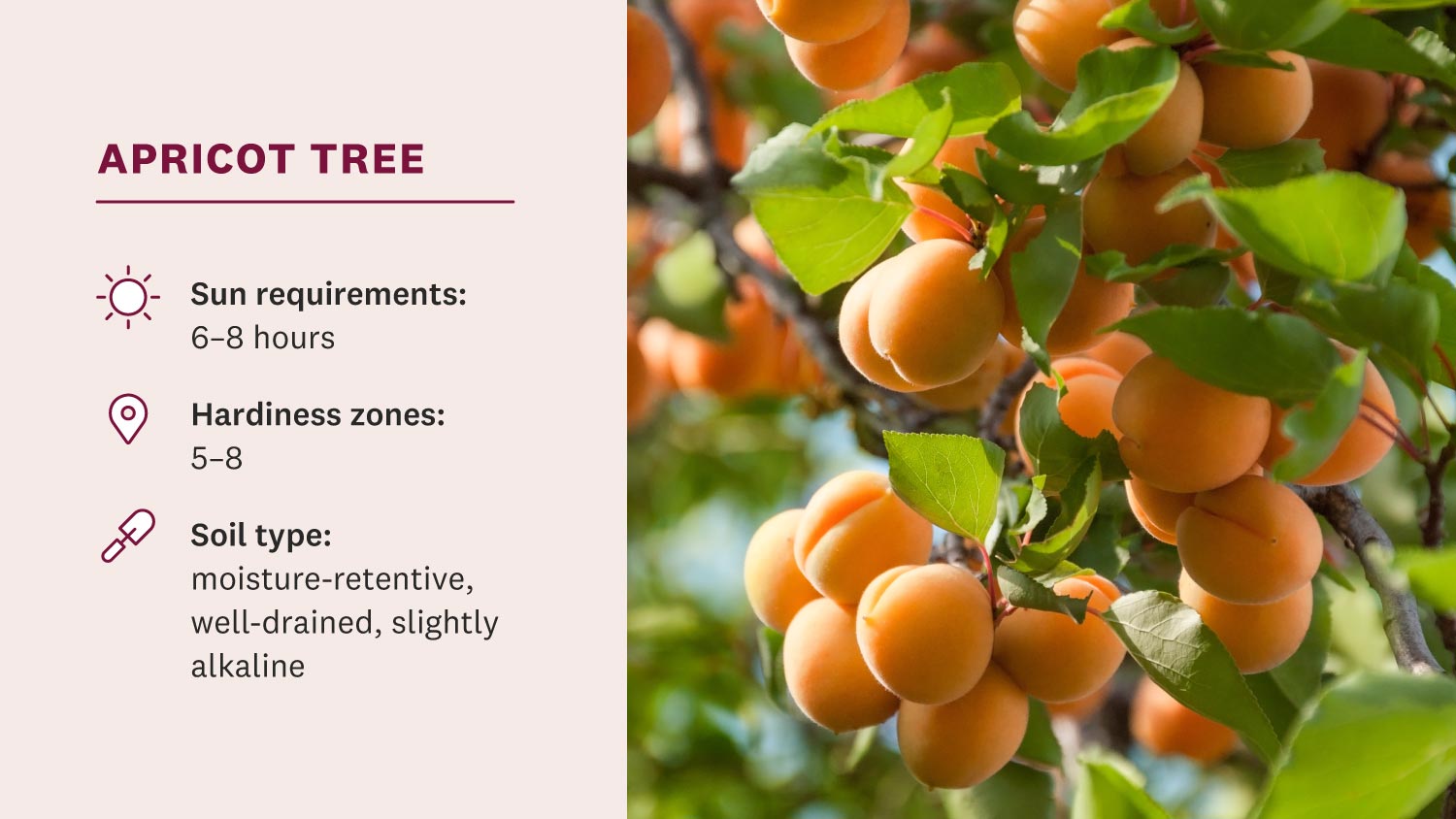
A cousin of cherry and plum trees, apricot trees bloom fragrant, white flowers that make an attractive addition to your home. These trees flower in mid-to-late April and produce this tasty fruit in early- to mid-July.
Apricot trees are very delicate, so it’s important they grow in the right conditions. To combat morning frost and fungal problems, consider planting this tree in a spot within your yard with good air movement through and around it.
Since the apricot tree flowers early in the season (when there aren’t many pollinators around), hiring a local arborist can assist in manual pollination techniques and ensure the tree is on a healthy growth track.

From Honeycrisp to Granny Smith, apples are a versatile fruit. The apple tree is one of the easiest to grow, making it great for beginner gardeners. Also, because dwarf sizes of this tree can start bearing fruit within two to three years, you won’t have to wait as long to reap your delicious apples.
Apple trees are fairly low-maintenance, as long as the soil is loose and rich with organic matter for the roots to spread and deepen.
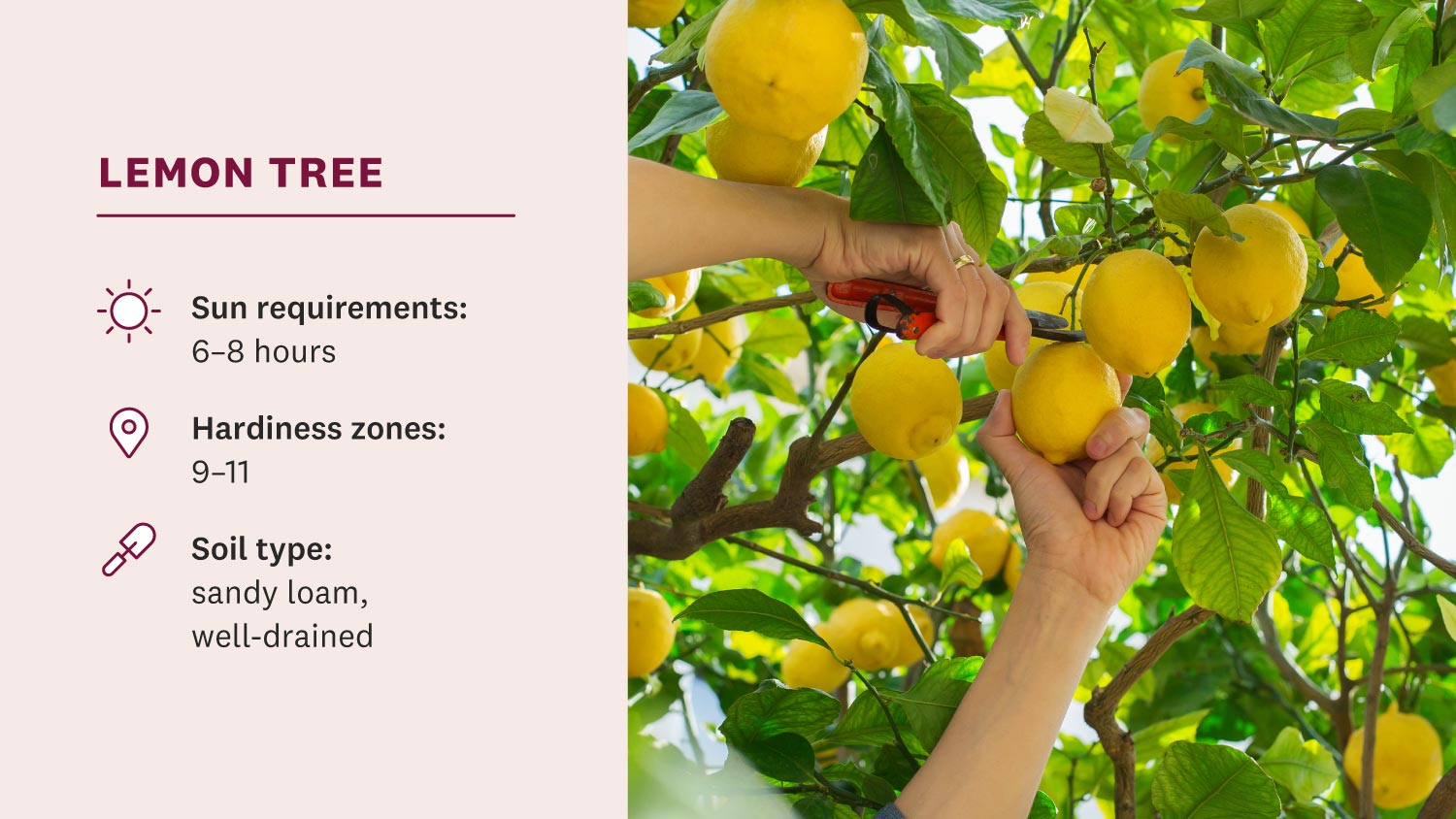
If freshly squeezed lemonade during a summer cookout sounds great, consider adding this citrus fruit tree to your backyard. Lemon trees require full sun (six hours or more every day) and thrive in warmer climates, so find a good spot on the lawn where there’s plenty of sunshine.
If you live in a state with cooler temperatures throughout the year, you can protect the tree roots and retain the soil’s moisture by adding a layer of mulch on top. Fortunately, lemon trees are suitable to grow in pots and containers, in which you can bring them indoors to survive colder weather.
Keep in mind that lemon trees love a lot of water, so creating a watering schedule can come in handy.
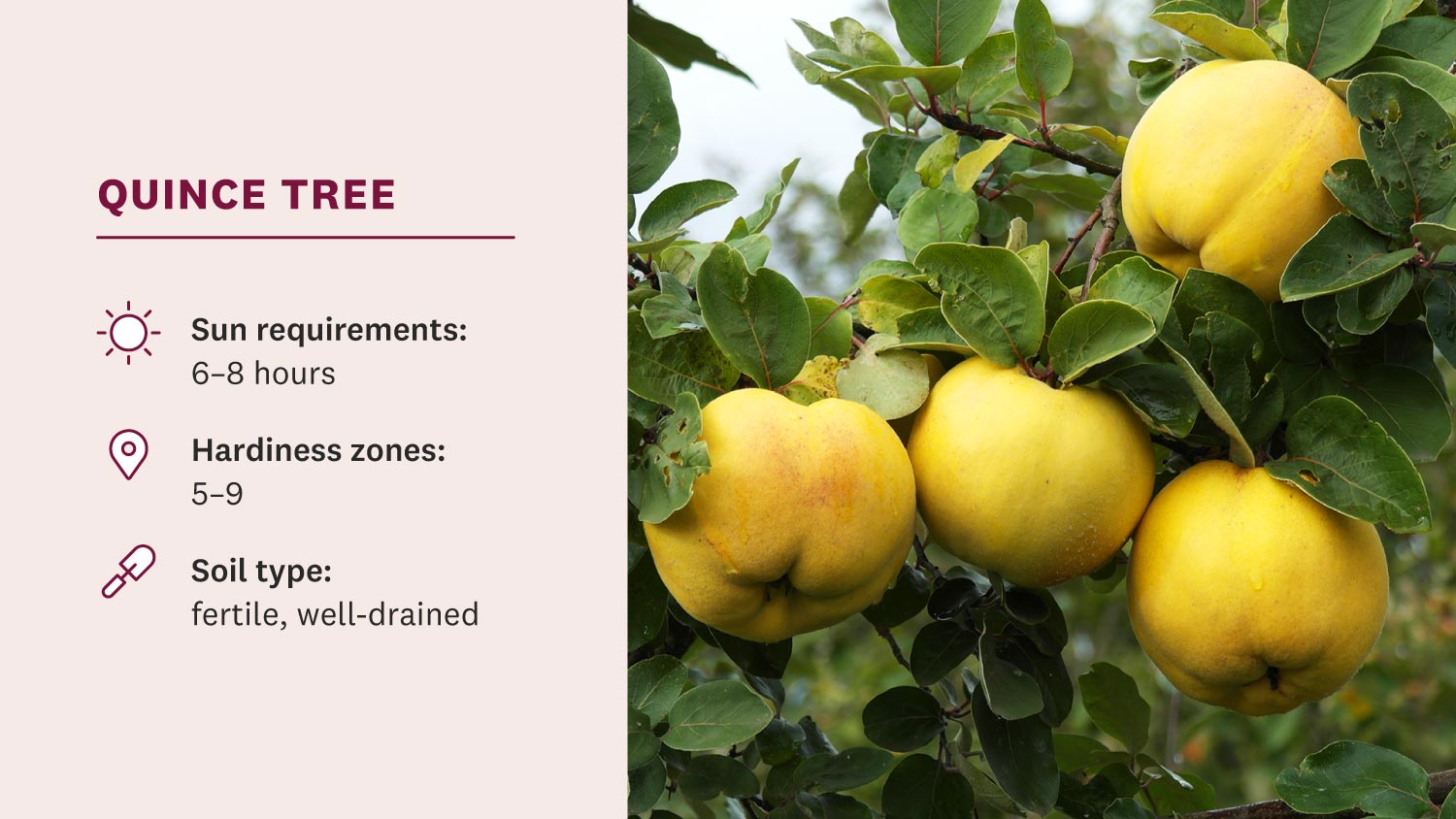
Do you have a small backyard? Opt for the quince tree, a great space-saving option. Quinces are very sour raw off the tree, but savory when cooked. This fruit is popularly used for making jellies, jams, and preserves.
Before producing fruit, the flowering quince is a highly fragranced, pinkish blossom that looks luxurious when in bloom. For easy growth and low maintenance, make sure your quince tree is planted in a sunny location.
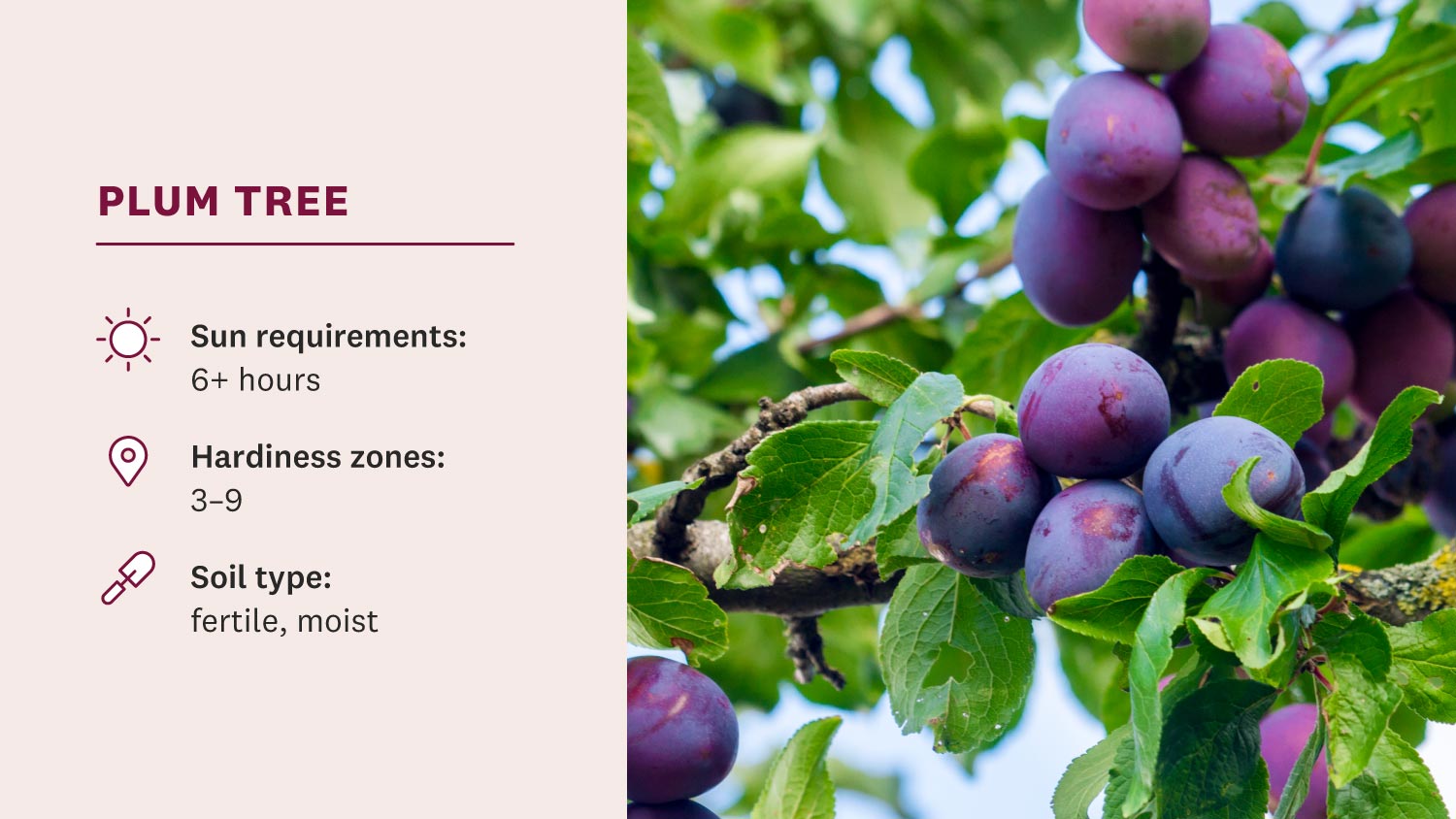
Plum trees are another space-saving option for small backyards. It’s also low-maintenance and easy to prune, adding to the list of fruits that are great for beginners.
The plum tree is a slow grower that requires warm, sheltered locations. Fortunately, it’s native to the Central and Eastern U.S., so it’s easily adaptable to weather conditions. Once ripe, you can eat your juicy plums directly off the tree, or save them to cook for jellies and jams.
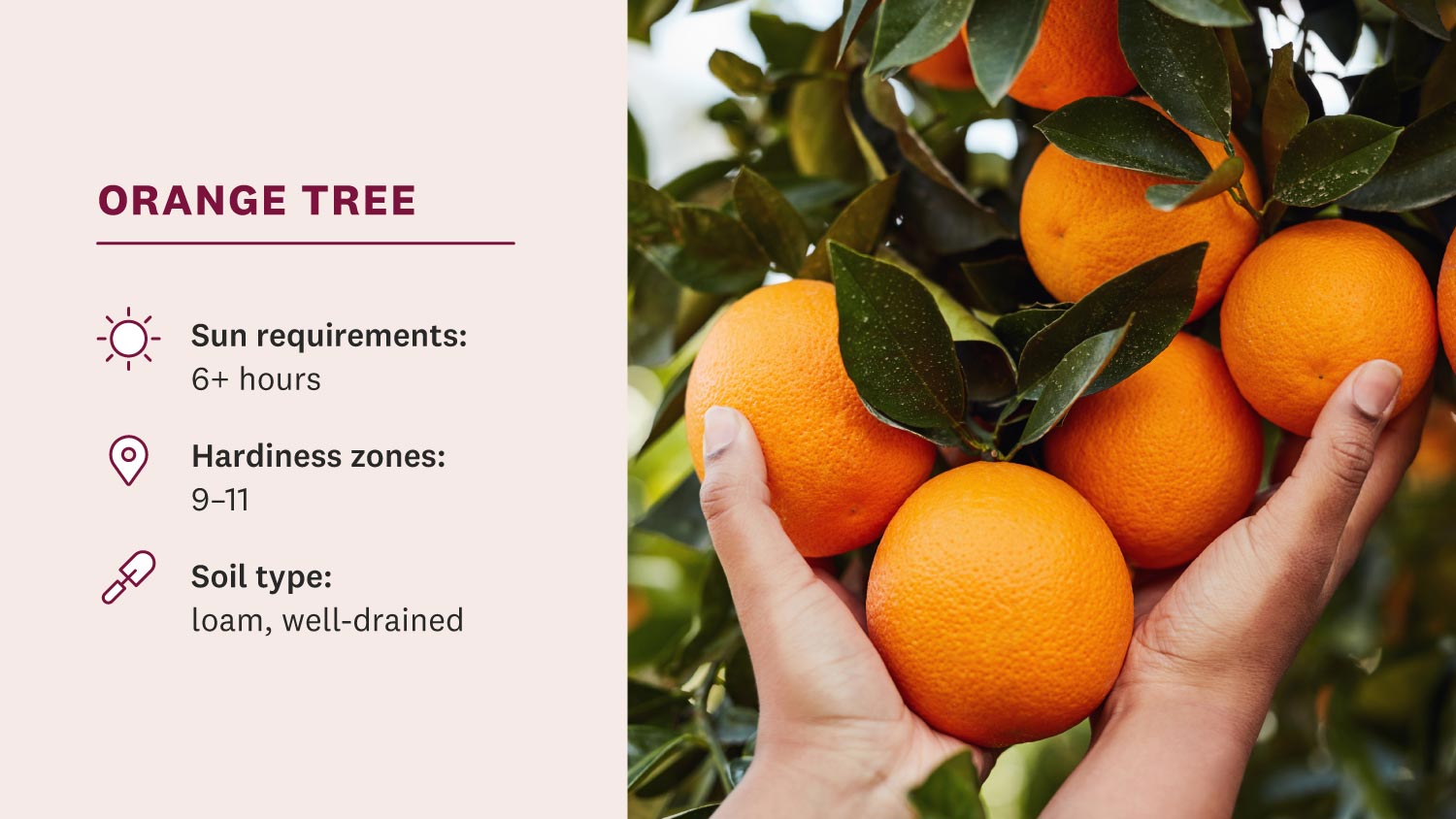
Wouldn’t you love to see bright oranges in your yard? This citrus fruit can hang on the tree for months before falling, making a lovely aesthetic for your landscape.
Oranges are grown mostly in states with hot summers and mild winters, such as California and Florida. Luckily, there are dwarf varieties of the orange tree, which you can pot and take indoors during the winter.
From flower to fruit, oranges can take about one year to grow. Best of all, they’re evergreen. Because orange trees don’t shed leaves in winter, they can produce flowers in spring and develop fruit in summer.
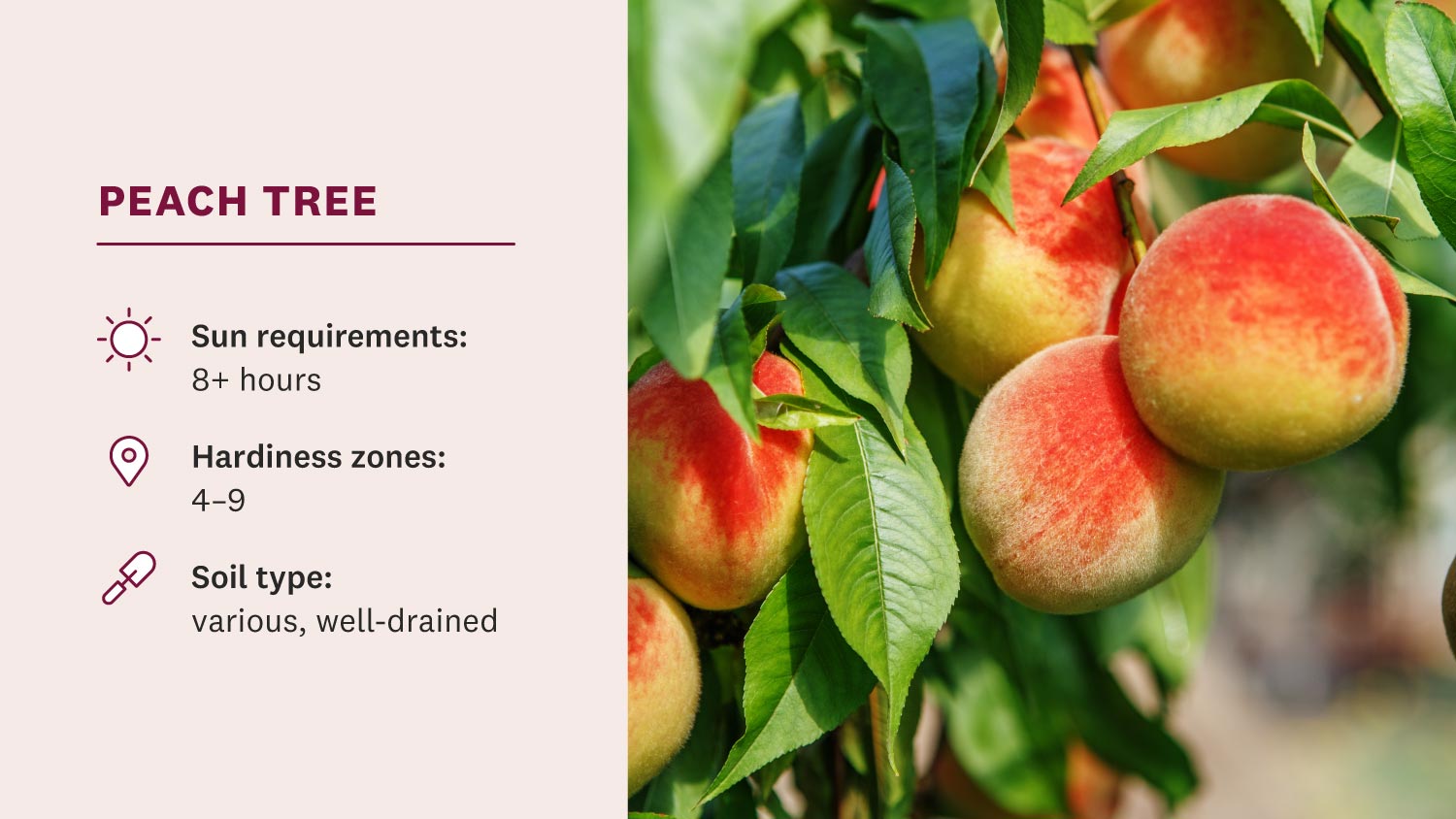
If you’re pretty busy with work or the kids, the peach tree is ideal. Not only is it a low-maintenance option, but you can also plant them any time of the year. They’re also quick to crop, with some producing fruit after just one year.
Peach trees grow well in sunny, sheltered spots, but do well in most types of soil with good drainage. You’ll need to protect this tree from frost, but fortunately, it’s another fruit that can grow in containers to bring inside during winter.8. Damson

Damson berries are a unique, flavorful fruit commonly used for jams, jellies, and preserves. They grow from white blooms with an alluring fragrance, which make great flowers for bees.
The best thing about damson trees is that they’re self-fertile, making them easy to grow. As long as they receive a lot of sun, these trees are very low-maintenance and adaptable to many soil types. You can expect to see fruit production within three to four years.
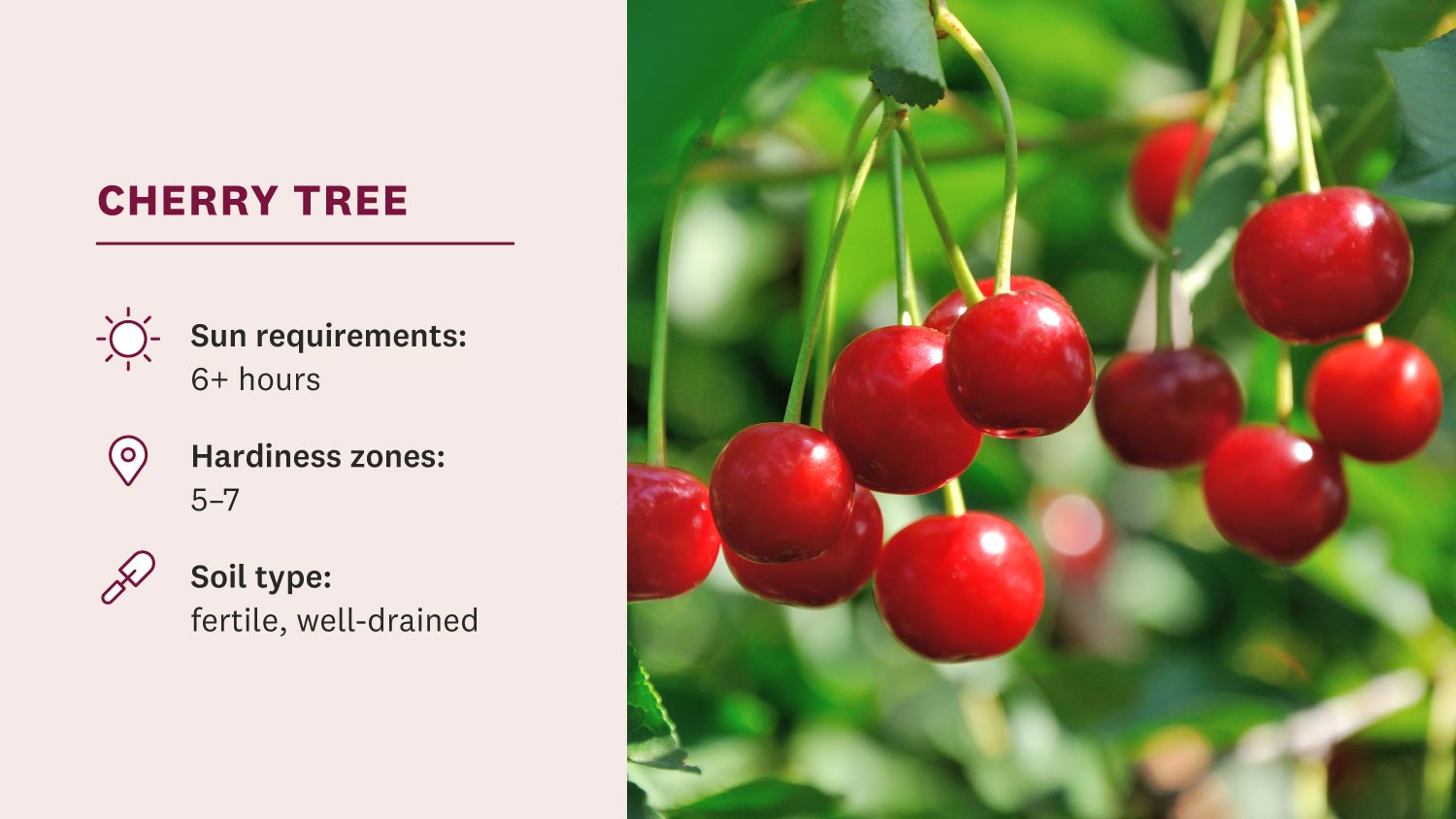
Experience beautiful springtime blossoms with this low-maintenance tree. Cherry trees are one of the easiest to grow with versatile planting options: free-standing, against a wall, or in pots.
The fragrance of cherry blossom trees can attract many pollinators to the garden, and after bearing fruit, they offer plenty of fresh berries for birds and wildlife. When the temperature drops, simply add a thick layer of mulch on top to help retain soil moisture and protect the roots.

With a variety of yummy flavors, you’re free to eat pears fresh from the tree or bake them in desserts. Though fairly low-maintenance, the pear tree is not self-fertile, so it will need a partner tree to thrive.
One thing to know about the pear tree is that it can take five to seven years to yield fruit. Nevertheless, you can hire a pro gardener near you to help plant gorgeous florals in your yard around it.

Though not as popular in the Americas as it is in West Asia and Southern Europe, the uniquely shaped fig fruit is easy to grow in most regions. The honey-like taste of figs is commonly used as sweeteners, a considerable alternative if you’re trying to avoid sugar.
Fig trees need warmth and plenty of sun but are also suitable for planting in containers to bring inside during colder months.
When deciding on a location in your yard, consider planting it along the fence. Growing fig trees against a wall helps increase fruit production, which can yield within two to three years.
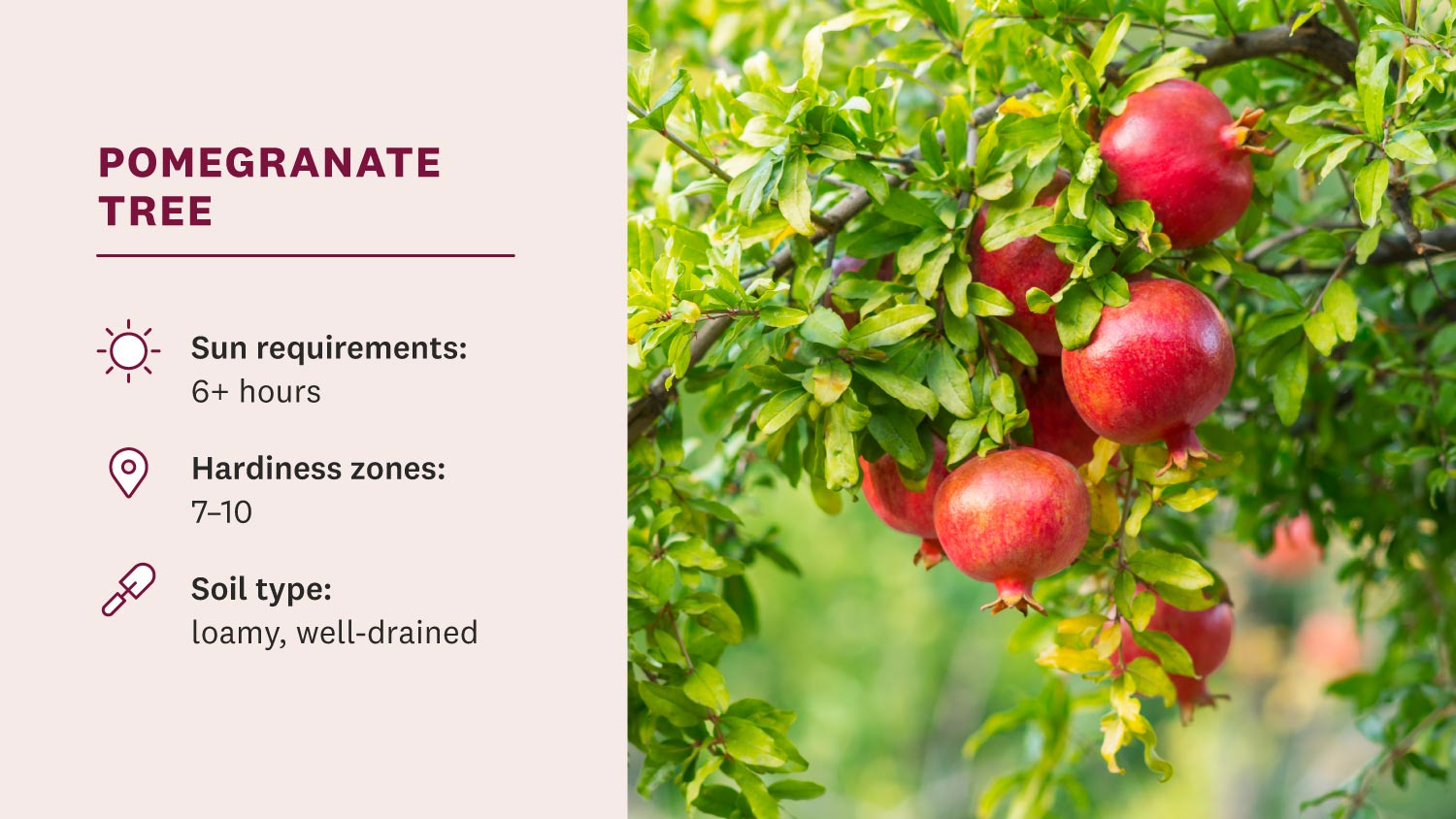
Do you often leave on winter vacation? Consider planting pomegranates. These drought-friendly trees don’t require any watering during winter and can survive temperatures as cool as 50 degrees Fahrenheit.
You can start your pomegranate tree in a large pot on your patio and go about your normal routines. They’re easy to grow from seed and typically produce fruit in three years. Once ripe, juice this vibrant red fruit or blend it in your smoothies to reap the rich antioxidant benefits.
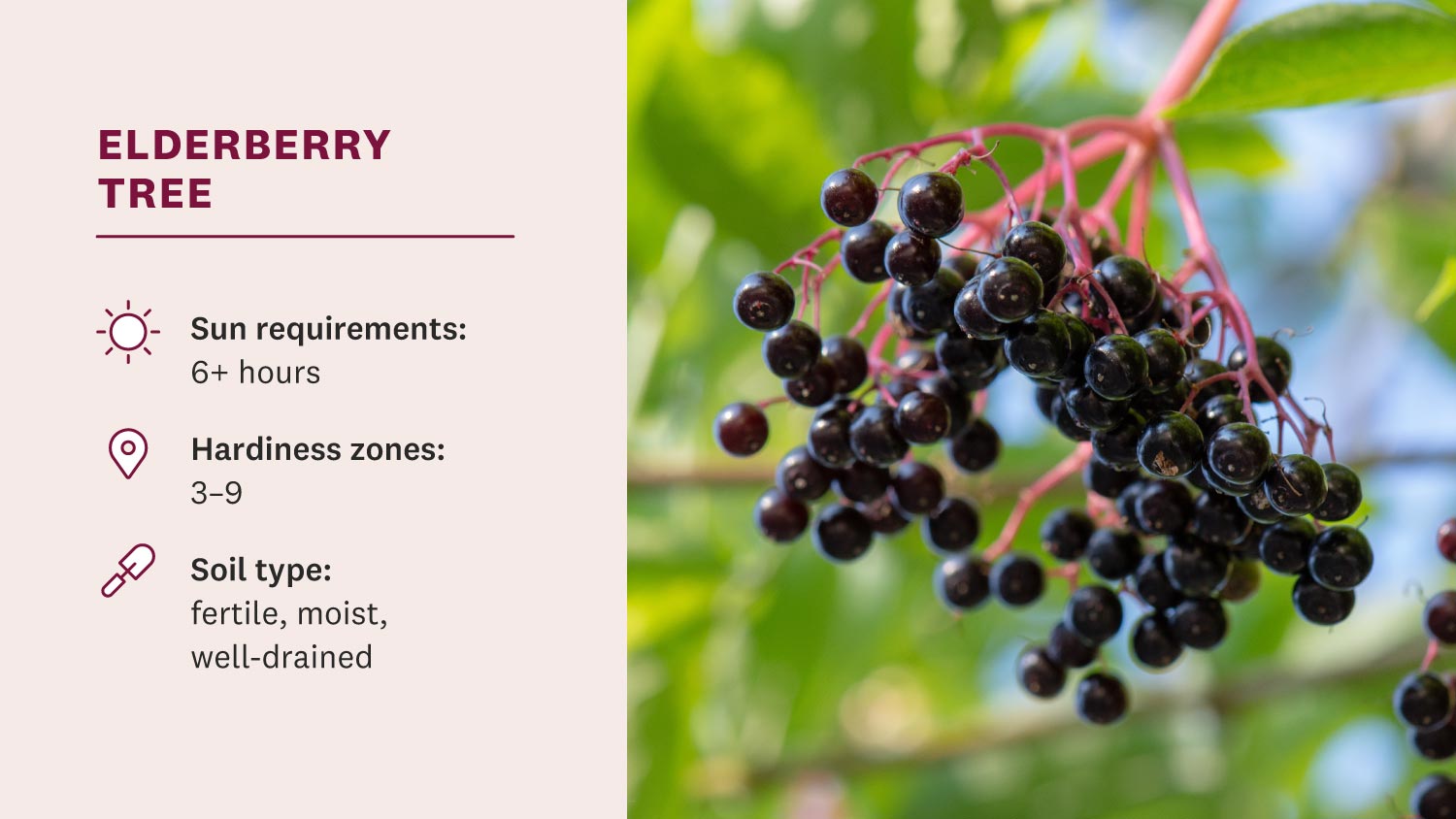
The elderberry is a fast-growing fruit tree and self-fruitful, so you only need one to pollinate. In fact, it’s a wind-pollinated plant, meaning a nice breeze can do the work.
A late-spring bloomer, elderberry fruit is great and flavorful once ripe and cooked. But be careful, as the remainder of the plant can be poisonous.
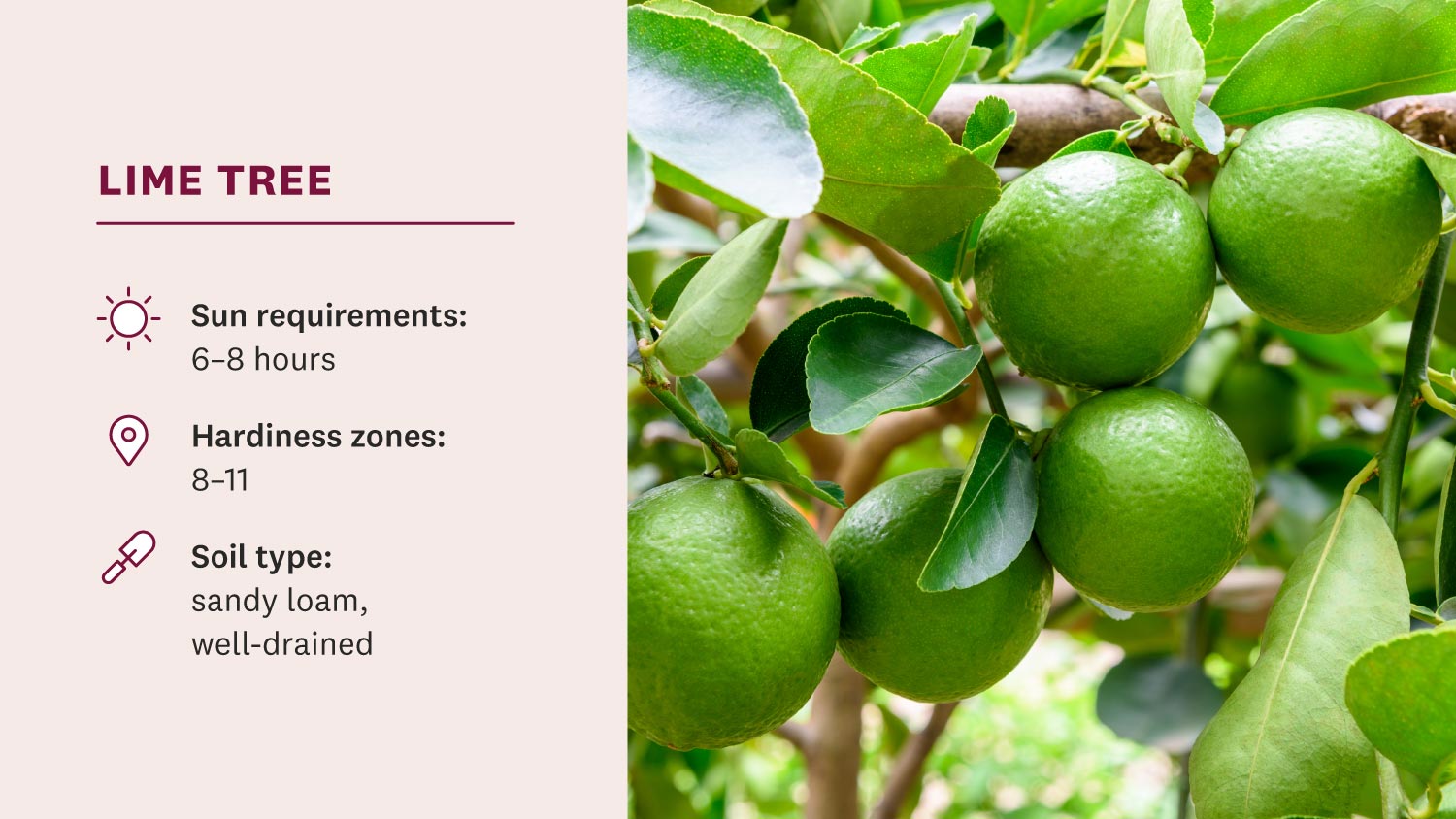
With this tree in the yard, you’ll be steps away from picking fresh limes for a cool summer drink, and you can store them later for your home bar.
Lime trees thrive in sun and warmth, and they’re sensitive to weather below 50 degrees Fahrenheit. Fortunately, you can add this one to the list of container-friendly trees. Simply pot it and keep indoors when there’s cold weather.
You’ll have to water lime trees frequently and fertilize them every few months for best results. Alternatively, you can learn to make compost at home to use for your trees.
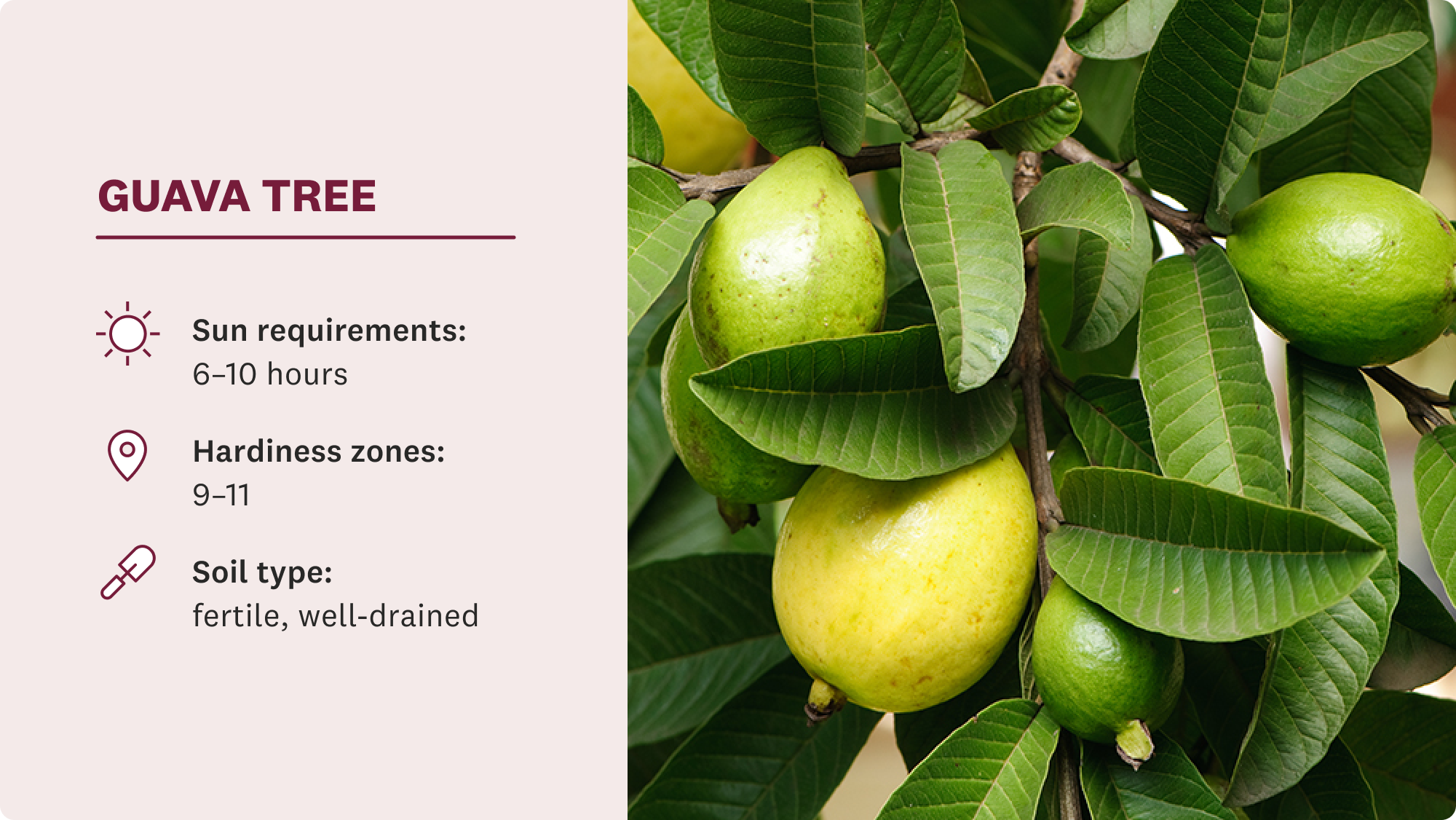
Guava trees thrive in tropical environments with hot and humid conditions. You can grow them outdoors in warm climates, but if the temperature drops too much, you’ll need to raise this plant indoors in a greenhouse or a sunroom. Just don’t forget guava trees need another tree close by to pollinate them and produce delicious fruit. You can expect guava trees to begin producing fruit a few years after planting—and your patience will pay off, as guavas taste sweet in smoothies, juice, jams, or jellies.
For the best results, you should plant guava trees in direct sunlight and fertilize them once every three months. Use a vitamin-friendly fertilizer with plenty of magnesium and iron. Use organic, well-drained soil, and water the tree every other day for the first week and once or twice throughout the growing season. When winter hits, guava trees require much less watering.
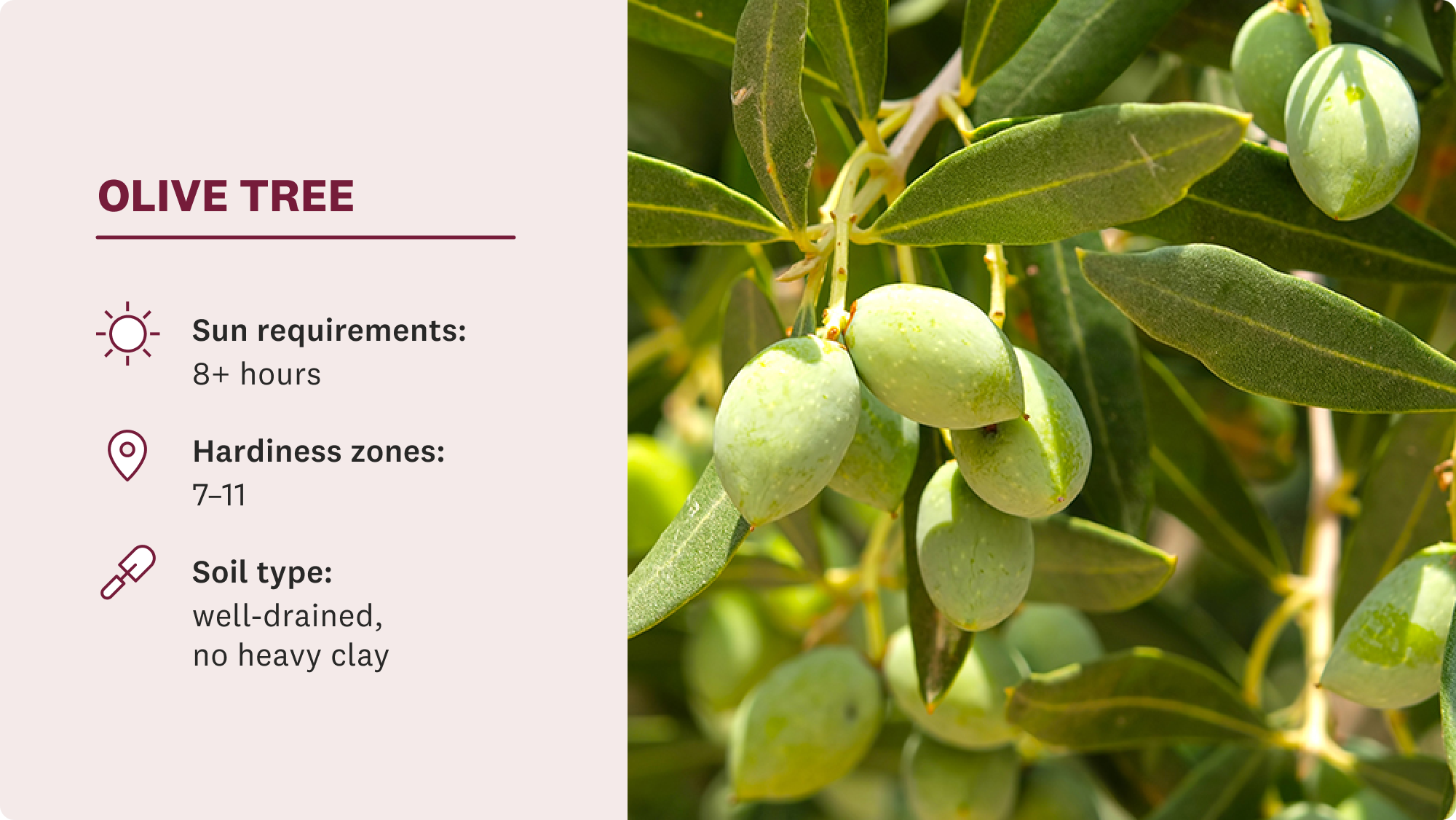
Olive trees are native to the Mediterranean and grow best in dry, hot summers and mild, cool winters. You can, however, grow the dwarf variety indoors as long as the tree has plenty of sunlight. They produce beautiful yellow and white spring flowers and lovely green foliage. Olive trees are self-pollinators, but if you want a variety of olives, plant the tree near another type so they can cross-pollinate.
You can grow olive trees with or without fruit—although they require a two-month dormant period with temperatures around 40 to 50 degrees Fahrenheit to bear fruit. To ensure a healthy, strong olive tree, plant them in full sunlight in the springtime after winter. Ensure they are watered regularly throughout spring and summer, and reduce water intake in winter. Keep olive trees away from extremely moist grounds, and don’t add organic fertilizers to the mix, as olive trees thrive in their native soil.
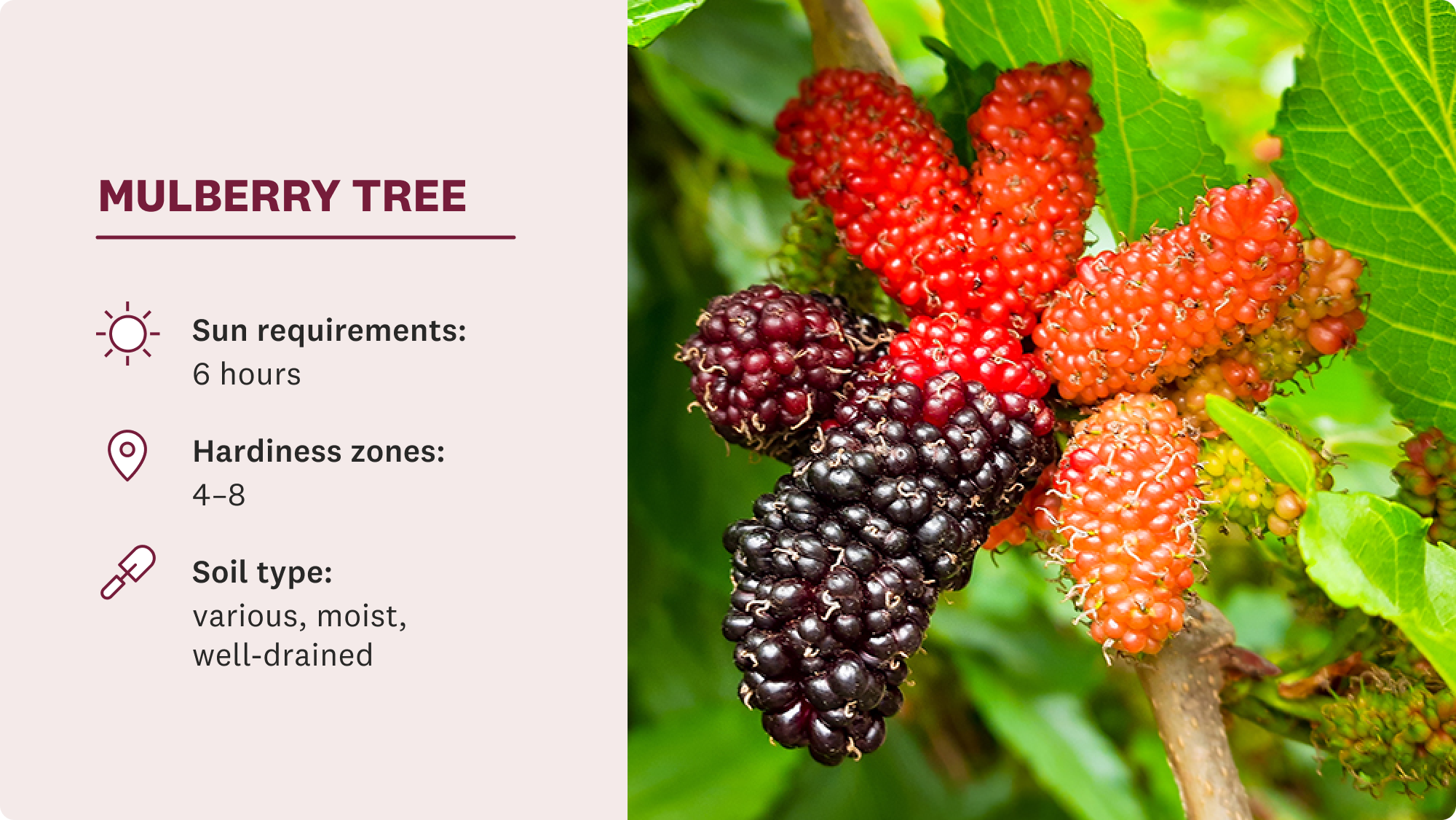
Mulberry trees are hardy fruit trees that grow red and white berries resembling blackberries. They thrive in cold temperatures, with many surviving at minus 25 degrees Fahrenheit. Yet, to produce lots of berries, Mulberry trees do best in temperatures around 68 to 86 degrees Fahrenheit during the growing season, in April and May. They prefer full to partial sunlight. You can expect Mulberry trees to grow flowers first and then produce fruit during mid to late summer.
You can plant fruiting or fruitless Mulberry trees. The fruiting variety is excellent for jams, jellies, and bird feeding due to their sweetness—however, they are incredibly messy and can easily stain your porch or pavement.
Plant Mulberry trees away from essential structures, such as your foundation, utility lines, and plumbing, as the root systems can cause damage. They require well-drained soil that’s mildly acidic. Be sure to fertilize them once yearly in late winter, and give them lots of water—two to three gallons per week—during the first year. After the first year, Mulberry trees are very self-sufficient and require much less watering.
The cost of planting a tree ranges from $100 to $300, but given the years of fruit and benefits it can provide, consider it a great bang for your buck. Learn below just how advantageous trees are to our health, communities, and environment.

Ready to plant your first free? Make sure you know which plant hardiness zone you’re in and that you have a planting calendar to help plan for the fruit season. If you need help visualizing the final look of your backyard once the fruit trees are fully grown, a local landscaping professional can bring design insight and suggestions.
Kaitlyn Pacheco contributed to this piece.
Green City Pros" AC installation Service is second to none! Technician John Was courteous and ensured everything was perfect.
In case you needed a reminder of the benefits of choosing a local small business rather than a big corporation, the services of Anthony Worthy are it. This past weekend, I was finishing a long few days of moving into my new apartment. The last thing on the list was a new washer and dryer. My...
It went well. They came out on a moments notice to fix my AC unit. They were professional and did the job well. They came after hours. I was very impressed with their service.
I spent about $500 on the job. I would recommend them because they were very courteous. They did very good work and they were on time. I will use their services again in the future.
From average costs to expert advice, get all the answers you need to get your job done.

Discover what the current average tree removal cost is based on different factors to know how much it will cost to take care of a dead or troublesome tree on your property.

How much does a palm tree cost? The answer depends on the type of tree, its size, and other factors. Find out how much a new palm tree costs.

How much does it cost to rent a chainsaw? Whether it’s for cleaning up your yard or cutting firewood, learn what options are available and what you’ll pay.

Are there insurance requirements for tree services? Whether you’re having your trees trimmed or finally removing that old oak from your front yard, you’ll want to make sure your tree company or contractor has these two types of insurance, at minimum.

Arborists define Dutch elm disease as one of the most destructive diseases a tree can catch. Here’s what you can do—from spotting symptoms to treatment.

Wondering who to hire to plant trees? Learn everything you need to know about the hiring process for professional tree planting in this informative guide.